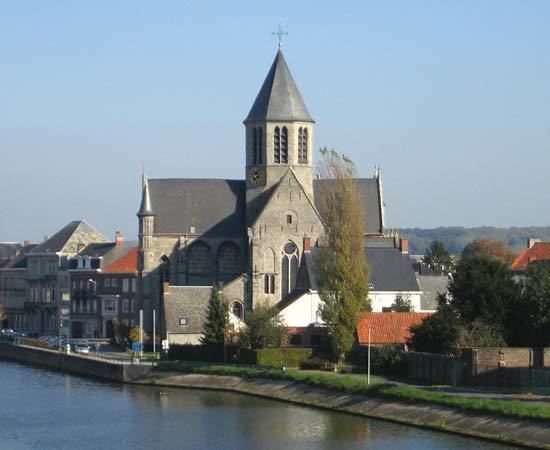Arrondissement Oudenaarde Postal code 9700 | Postal codes 9700 Local time Tuesday 4:07 AM | |
 | ||
Weather 6°C, Wind S at 3 km/h, 80% Humidity Points of interest Centro del Tour de Flandes, Koppenberg, Abdij maagdendale, Provinzial‑Archäologisches Museum Ename, Archeologische site Ename | ||
Oudenaarde ( [ˈʌu̯dənaːrdə], French Audenarde, English sometimes Oudenarde) is a Belgian municipality in the Flemish province of East Flanders. The municipality comprises the city of Oudenaarde proper and the towns of Bevere, Edelare, Eine, Ename, Heurne, Leupegem, Mater, Melden, Mullem, Nederename, Welden, Volkegem and a part of Ooike.
Contents
- Map of Oudenaarde Belgium
- The glory of Ename
- Oudenaardes golden age
- Decline
- Sights
- Events
- Sports
- Notable inhabitants
- Twin towns sister cities
- References
Map of Oudenaarde, Belgium
From the 15th to the 18th century, but especially in the 16th century, Oudenaarde was a world-known centre of tapestry production. The town's name, meaning “old field”, still lingers on in “outnal”, an obsolete English term for a kind of brown linen thread.
The glory of Ename
The history of the current municipality of Oudenaarde starts in 974, when Otto II, Holy Roman Emperor and king of Germany, built one of its three fortifications on the Scheldt at Ename to protect his kingdom against possible attacks from Francia (the other two frontier posts were at Valenciennes and Antwerp). Ename grew very fast. By 1005, the town already had a couple of churches and had become the largest town in the Duchy of Lotharingia. In 1033, Count Baldwin IV of Flanders took the city as a frontier post against emperor Henry III. In 1047, Baldwin V consolidated his father’s victory by having his wife found the Benedictine abbey of Saint Salvator there. By that time, the former merchants and guild artisans of Ename had fled across the Scheldt to the recently founded city of Oudenaarde.
Oudenaarde’s golden age
In the 11th century, Oudenaarde’s economy flourished, thanks to the proximity of the Scheldt and to the burgeoning, but vibrant cloth and tapestry industry. Churches, cloisters and hospitals were built. Throughout the Middle Ages, the city was one of the staunchest supporters of the counts of Flanders, defending them against insurrections from the South, and even from Ghent. The city became known as the residence of the nobles. It built itself a flagship town hall (built 1526–1537), which we can still admire today, and the St-Walburga church. Charles V stayed here for a couple of months in 1522 and fathered an illegitimate daughter, Margaret of Parma, who was to become Regent of the Netherlands.
Decline
During the Reformation, the people of Oudenaarde chose Protestantism and allied themselves with Ghent against Charles V. In 1582, after a prolonged siege by Margaret's son, Alexander Farnese, the city finally gave in, causing most merchants, workers, and even nobles to flee. Oudenaarde fell under the Counter-Reformation, which for a short while revived the commerce of tapestry. The glory days, however, never came back. The French attacked and took the city three times in less than a century. In 1708, one of the key battles in the War of the Spanish Succession, known as the Battle of Oudenaarde, was fought in the vicinity of the city. Oudenaarde slumbered as a provincial town under the Habsburg regime.
Like its neighbours, in the 1790s it suffered religious curtailment imposed by the French Revolution. The city later suffered damage during World War I, which is commemorated by several monuments scattered around town.
Sights
Events
Sports
The main football club in Oudenaarde is K.S.V. Oudenaarde.
The celebrated Tour of Flanders voor Vrouwen, the women's Tour of Flanders cycle race, starts in Oudenaarde every spring. The men's Tour of Flanders has passed through Oudenaarde on several occasions, finishing in the town since 2012, and it regularly ascends the Koppenberg hill in the municipality. The Koppenbergcross cyclo-cross race, which takes place on the Koppenberg hillside, is part of the BPost Bank Trophy.
